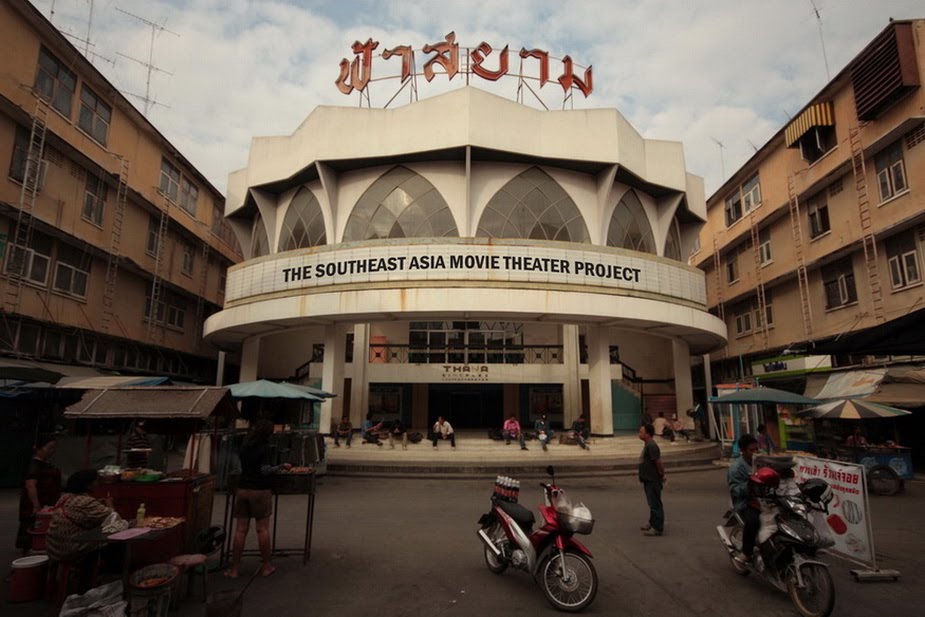One of the surest ways to stoke the flames of interest about a place is to make it off-limits. Give it some time and the unknown - hence unverifiable - will invariably give way to rumor, myth or otherwise fantastical ideas about said place. The harder it is to access, the greater the fantasy will arise.
Take Ye, for instance (pronounced Yay). In 2011, when I was first in the vicinity, overland travel between Dawei and Mon State, where Ye lies, was prohibited. The official reason was that a long running stand-off between the Mon National Liberation Army and the central Myanmar military, commonly known as the Tatmadaw, made travel unsafe. Foreign visitors were barred from entry, leaving the ancient Mon principality to take on mythical status in the minds of the excluded. That allure was further heightened, in my case, by a lone golden affirmation straight from the mouth of a Ye migrant cabbie that I had questioned in Yangon the week before: "Yes," he proclaimed, "there is a cinema in Ye."

The Yan Aung Thiri Cinema. A staple of the Ye townscape since 1974.
The city of Ye and surrounding hinterland opened to tourism in 2013, allowing for all the speculation to be put to rest. There is indeed an old movie theater in town. Two, in fact; amid what is yet another leafy, human scale Myanmar city that anybody with penchant for charming urban forms should make a pilgrimage to.
A man takes a short cut through the Yan Aung Thiri Cinema, abandoned or about 10 years.
A good number of the movie theaters I came across during my recent Mon State tour are, for lack of a better description, rudimentary structures. That's not to say that they're not well constructed, or made of fine materials. They are. In fact, you'd be hard pressed to find a theater builder anywhere in the world in this day and age build a theater that has hand crafted teak wood stairs leading to a teak balcony. Or a teak proscenium painted in pastel colors. How about exposed wooden support columns running up the side of the walls? Good luck trying to find anything close to that in a theater built today. But in the realm of decor and what you might call creature comforts, these theaters were simple creations.
At the most extreme end of simplicity is the packed dirt floor of the Yan Aung Thiri. Structurally, while definitely a feat of craftsmanship, it is devoid of even the most basic ornamentation, or sveltness of design that most people associate with old movie theaters. Its brick nogging exterior surface and exposed wooden structure endow it with an anti-industrialism that echoes the Arts and Crafts movement in the West. That, however, is an unlikely connection for a small town Myanmar movie theater from the early 1970's.
There's some holes in the wall, where tickets were sold to all.
Rays of morning sunlight stream through broken windows at the rear of the auditorium
Cinema ephemera litters the floor beside hand-crafted teak stairs leading to balcony seating.
The most notable ornamentation at The Yan Aung Thiri Cinema is the multicolored proscenium that framed the screen, since removed.
By 1974, when The Yan Aung Thiri Cinema was built, Myanmar, then Burma, was well down "The Burmese Road to Socialism," the political philosophy developed by General Ne Win's military government. The basic principles of this ruling mandate were based on xenophobia and superstition, with the state as the guiding hand of everything.
The Yan Aung Thiri was a product of that state. So, although it's a fine building in many ways, its simplicity probably has roots in the socialist values purported by the government, if not the fact the country had simply grown too isolated and poor to build anything much more luxurious.
Most of the rows of teak wood seats have been removed.
Discarded movie posters cover the floor of the balcony.
Street scene in front of The Yan Aung Thiri Cinema. A woman came up to me while I was taking photographs and said she hoped that somebody would come and fix up their movie theater.
The Yan Aung Thiri Cinema is a bona fide landmark, albeit an under the radar one, in a town that for years had been completely off the radar. Like Myanmar in general, the self-sequestering of Ye led to severe stagnation. It also had the effect of freezing the town in time. To see the city now is to step into a past that elsewhere in Southeast Asia people are, more or less, beginning to lament the loss of. Such is the price of progress.
If Myanmar is wise it will take note of such sentiments and put resources towards preserving whatever it can of its prized past, movie theater or otherwise. Economic stagnation may indeed have inadvertently preserved countless cultural treasures. But preservation by neglect only goes so far. And now the far more tenacious adversary of demolition by progress is entering the ring.
------------------------------------------------------------------------------------------------------------------------------------------------
A moment of your time.....
Are you a fan of The Southeast Asia Movie Theater Project? Want to see it continue and expand into new towns, cities and countries? If so, you might want to consider making a donation. As the sole proprietor of this project, I'm more often than not funding it on my own. And while I do so with pride and joy, it's difficult to sustain. Your modest contribution will help me reach these old theaters and continue raising awareness of them. Maybe even a few will be preserved along the way.
Sincerely,
Phil








